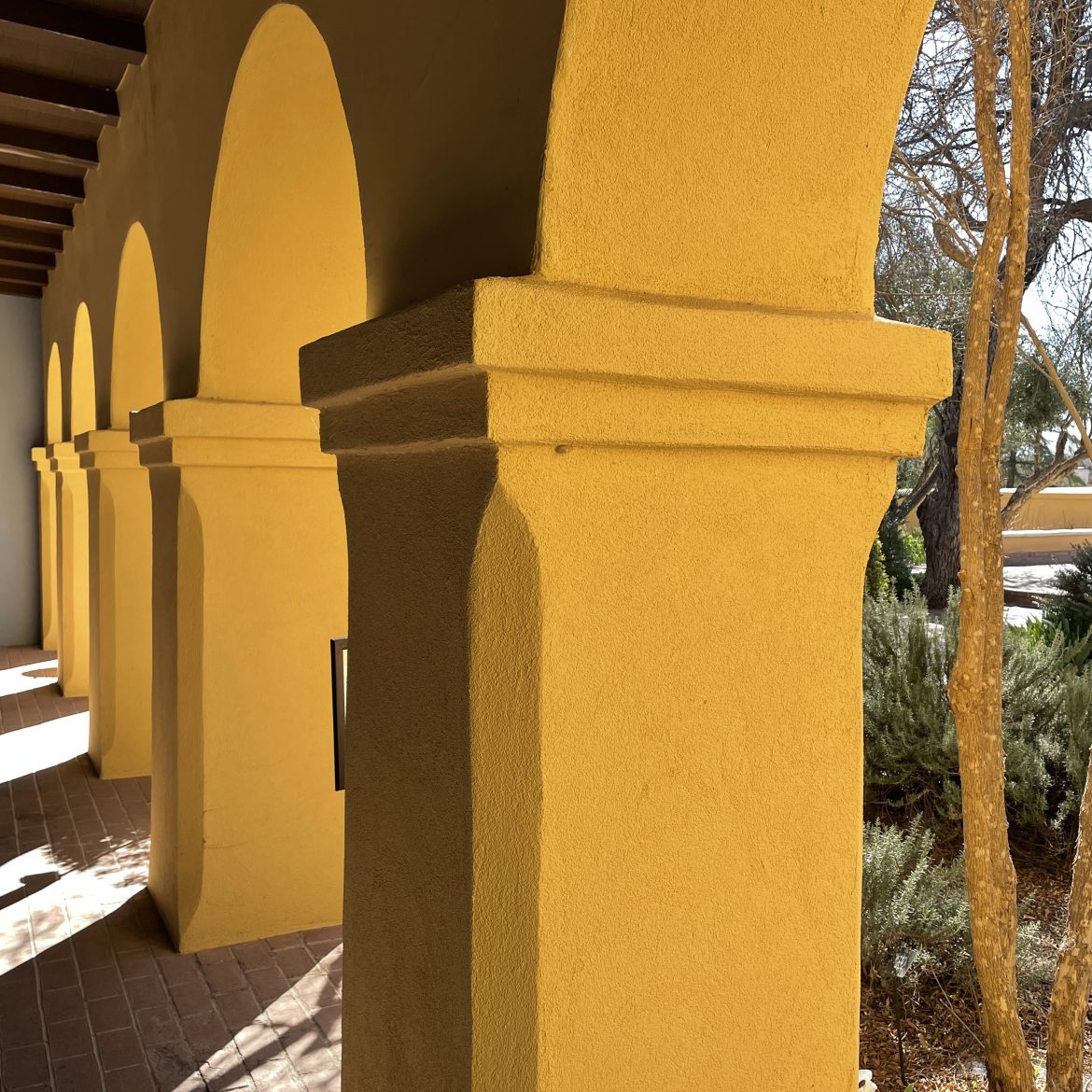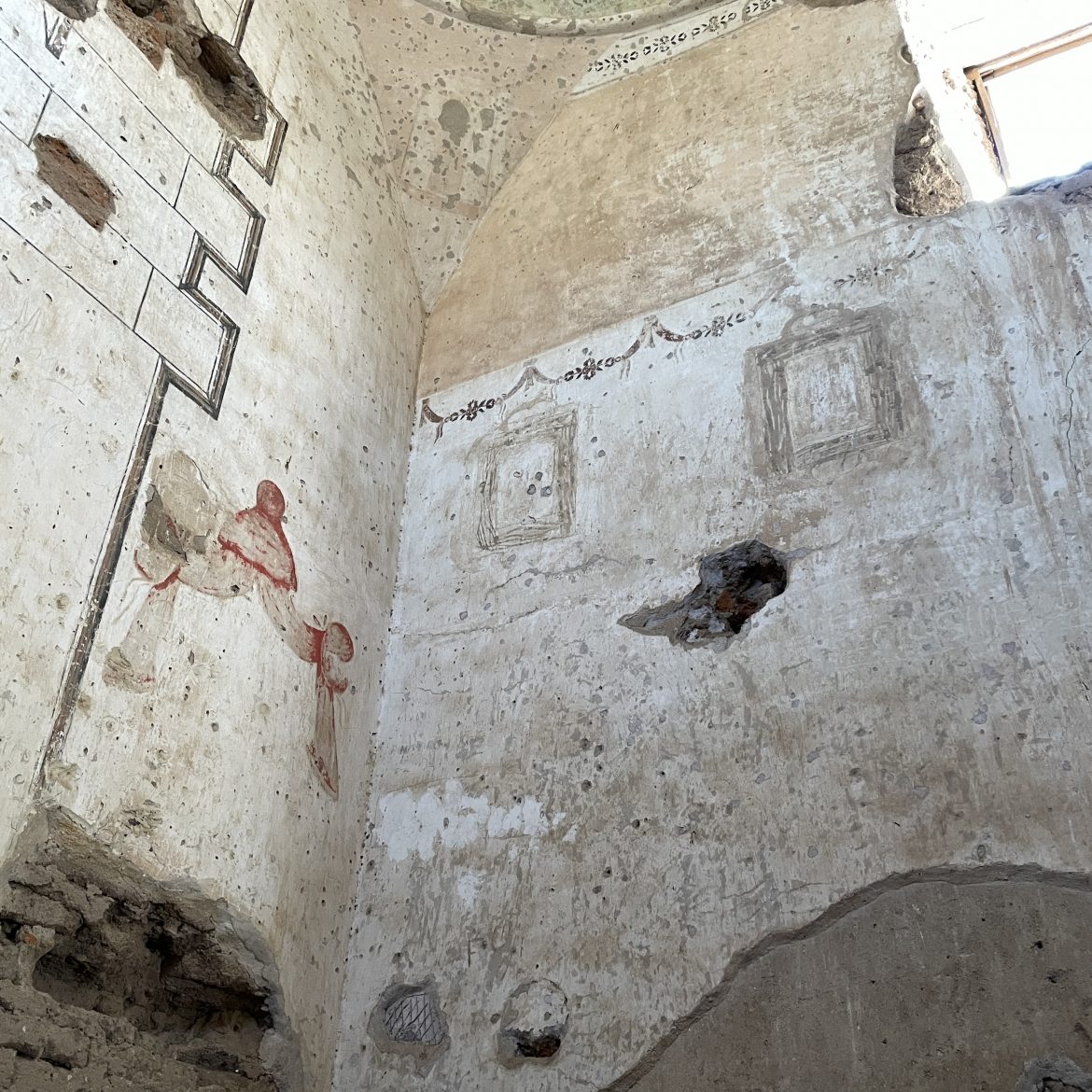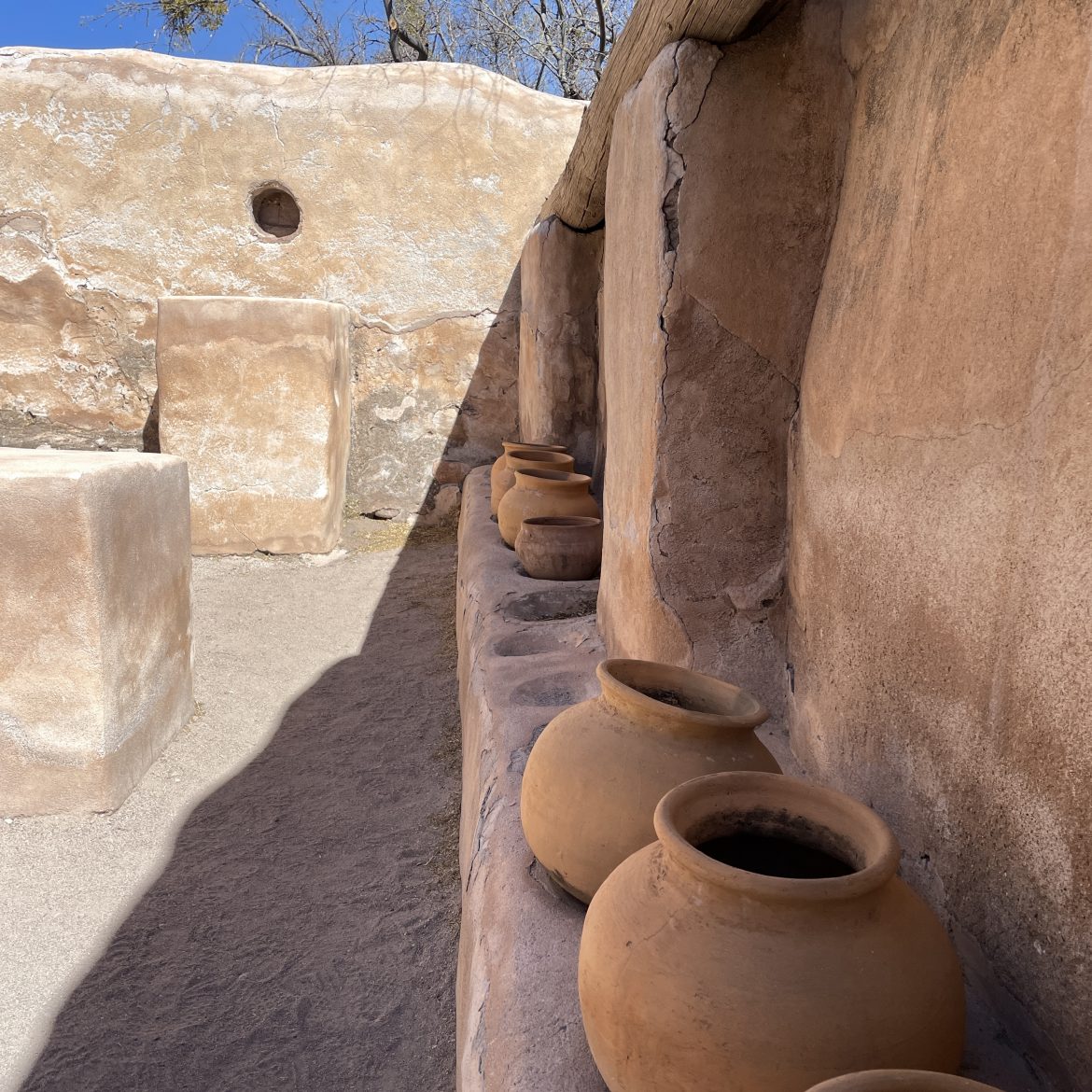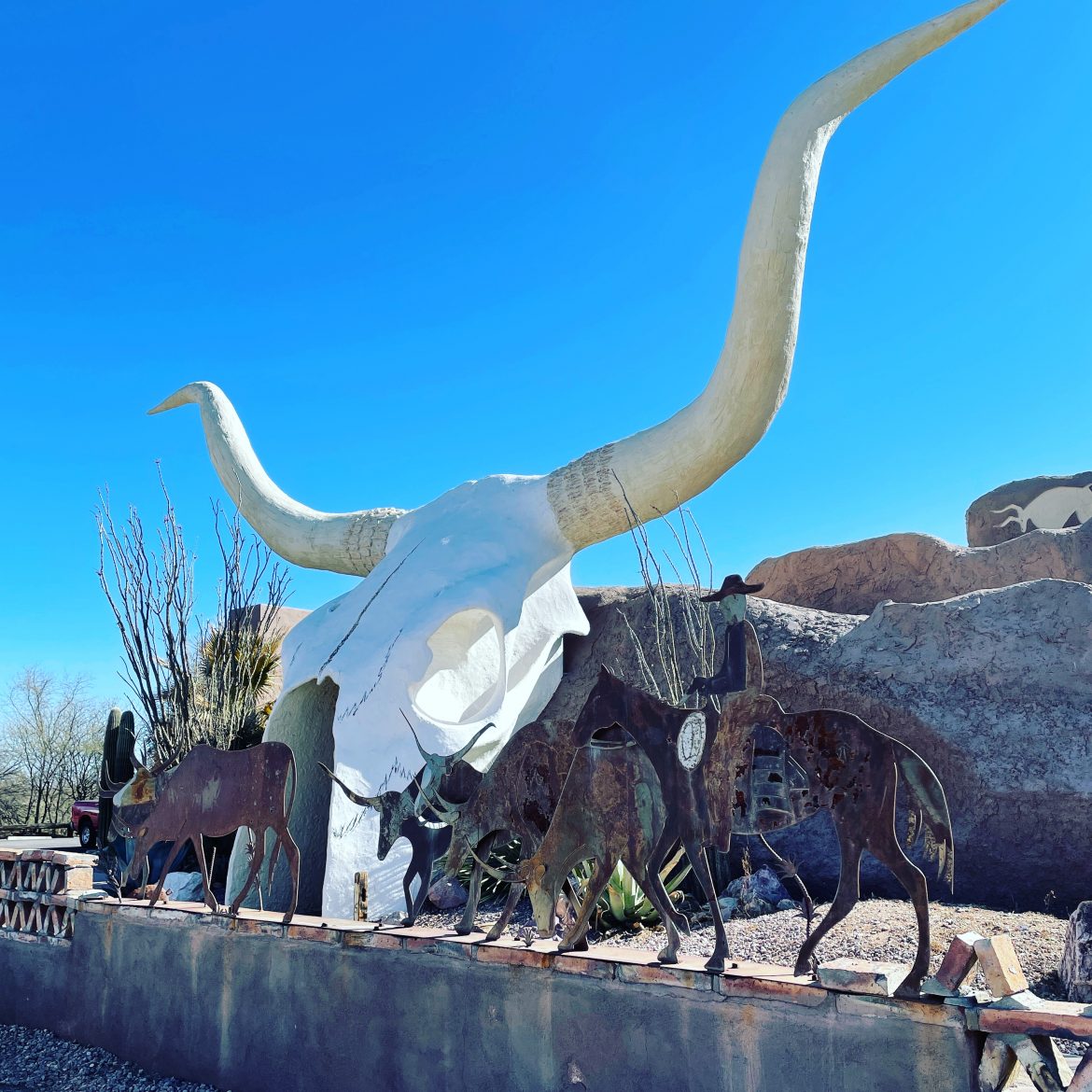ARIZONA – Excursion to Tumacacori and Tubac

What is it about ruins that many, including me, find so compelling? The melancholy half-fallen buildings make me try to visualize the labors of those who built them. What were their lives like and why were the buildings abandoned? What does a tiny graveyard say about the injury and disease that must have wracked the local people? My attempts to imagine what their lives were really like is doomed to failure because of the passage of time and mostly unbridgeable cultural differences. But the artifacts they left give hints that pull me in.
Such is the case with the mission at Tumacacori, now cared for by the National Park Service. The inhabitants of this area were and still are O’odhham, farmers who grew corn, beans, and squash on land irrigated by what is now called the Santa Cruz river. The mission was founded in 1751 as part of a string of “civilizing” settlements in the southwest of what is now Arizona and northwest Mexico and abandoned 1848 after repeated Apache raids.

The last time I visited was a cloudy day several years ago and works to restore the site seemed to be minimal at best. Depressing. This time, the sun lit the old buildings. The church dome was freshly whitewashed, in brilliant contrast to the blue sky.
The interior of the never-completed church was lit by the desert light.


The storehouse was restored as was a round mortuary chapel next to a tiny graveyard. What happened to all the others who must have died, I wondered.


After contemplating the small museum showing mission life, my friend and I took a pre-lunch walk through the newly planted orchard to the Santa Clara River. It sparkled in the sunlight and bright red cardinals flitted from branch to branch. No wonder ancient peoples settled here.

Tubac, a few miles north is a tiny town devoted to tourism in the form of shopping and eating. It was time for lunch at the famous Elvira’s restaurant before succumbing to the delights of browsing the shops My friend had a Chile Relleno and I had a salad to ensure room for dessert. If you’re into all things shiny, this is the place for you because the restaurant and home décor store pay homage to everything bright and glittery.




More typical brightly-colored wares, ceramic and painted metal, are displayed in other shops. No doubt suitable for the desert environment but I couldn’t image them in the cloudy Pacific Northwest.


I couldn’t resist a photo of what might be called industrial art on the way to a store devoted to all things cooks might need or be tempted to try. I passed on the instant pasta, a sacrilege for one who’d lived in Italy.


On our shopping walk we passed typical and beautiful ristas – braided bunches of dried chile peppers for Southwest cooking.

On the way back to home base in Green Valley, we took in one more bit of local architecture (a steak restaurant of course) before sipping gin and tonics on the patio to watch the setting sun flood the desert with golden light.

All photos copyright Judith Works


Jane Nesig
As always, your postings are captivating, informative, and visually beautiful. Thank you.
Nicki Chen
I also find ruins compelling. Every place I go I like to know something about its history. It helps nudge me out of my one-dimensional view of the world I see to know where it came from, and it reminds me that the seemingly stable present world will eventually become something else.
judithworks
Someday, I suppose our old buildings will become curiosities for travelers to poke around in!